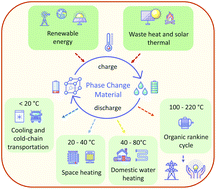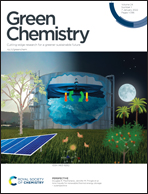Ionic liquids for renewable thermal energy storage – a perspective
Abstract
Thermal energy storage systems utilising phase change materials have the potential to overcome the intermittency issues associated with most renewable energy sources, significantly contributing to the decarbonisation of the energy sector. While the concept of storing energy in the latent heat of a phase transition is not new, large scale systems employing this concept have not yet realised their full potential. This is in large part due to the shortcomings of conventionally used materials – whether it be issues with their flammability, chemical and thermal instability, corrosivity, poor cycling stability, or a combination of these. Ionic liquids offer a suite of inherent “green” properties that translate well into the field of phase change materials, namely low volatility, low flammability, and good thermal and chemical stability, alongside the potential to tune their chemical and phase properties. In this Perspective, we discuss the evolution and promise of the emerging field of ionic liquids for renewable thermal energy storage. Systems are considered from a holistic, sustainable point of view, demonstrating the importance of assessing material origins and synthetic pathways as well as system performance through lifecycle assessment. We elucidate the emerging design rules for optimising thermal properties, and in doing so attempt to provide an overview of promising emerging systems and future directions.

- This article is part of the themed collections: 2021 Green Chemistry Hot Articles and Green Chemistry Reviews


 Please wait while we load your content...
Please wait while we load your content...